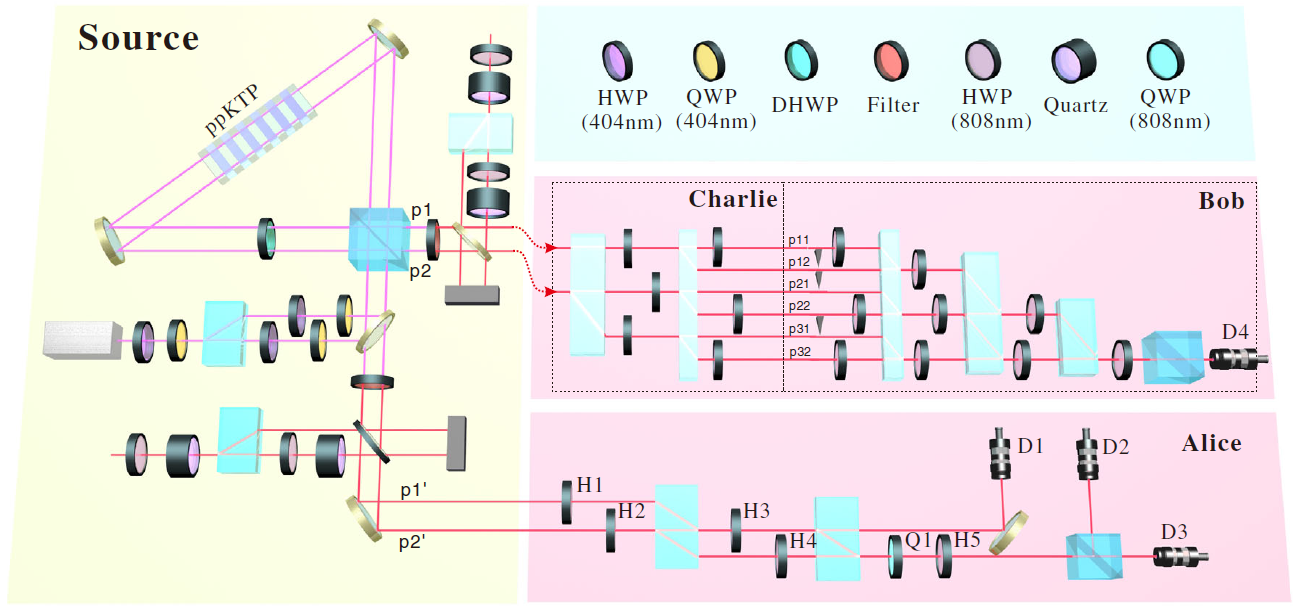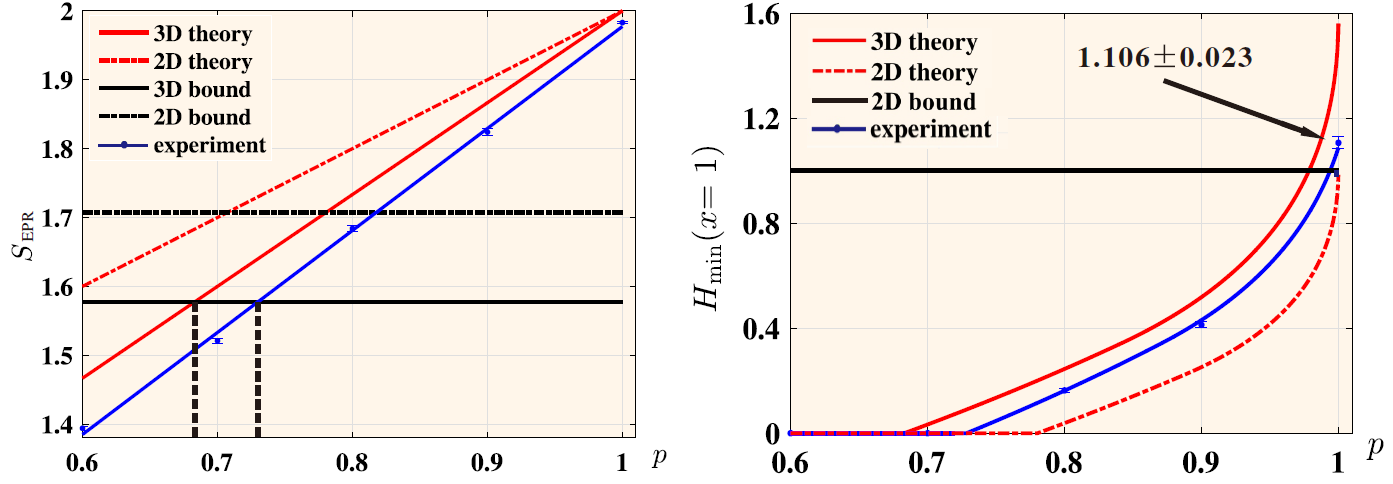USTC First Achieves Experimental Measurement-Device-Independent Quantum Steering
Academician GUO Guangcan's team has made important progress in the research of basic problems of quantum mechanics. The experiment was conducted by LI Chuanfeng, LIU Biheng and others in collaboration with Australian theoretical physicists. The team reported the first measurement-device-independent (MDI) verification of quantum steering of qudits by generating a class of photonic qutrit pairs. Then they apply the observed data to extract private randomness, observing the first MDI random number generator that beats the bound of 1 bit for qubit systems with projective measurements. The research results had published in the authoritative journal physical review letters on Oct 23rd.
Einstein-Podolsky-Rosen (EPR) steering is a class of nonlocal quantum correlations strictly intermediate between entanglement and Bell nonlocality: some entangled states are not steerable, and some steerable states are Bell local. It has found applications in information-processing tasks such as one-sided device-independentquantum key distribution (QKD), subchannel discrimination, and randomness generation Entanglement, EPR steering, and Bell nonlocality can be interpreted as the task of entanglement verification with varying levels of trust. Several experiments have been reported to witness EPR steering for qubits, high-dimensional systems beyond qubits, and continuous
Variables. An experimental MDI verification of steering for qubits was reported in the former research, together with a method to construct quantum-refereed steering (QRS) witnesses from a given steering inequality.The team studied the trust-free verification of EPR steering beyond qubits.
Inspired by this, the research team studied high-dimensional quantum steering and experimentally demonstrated the trust-free verification of Einstein-Podolsky-Rosen steering beyond qubits by preparing a class of entangled photonic qutrits. They also applied their apparatus to extract randomness at a rate of 1.106 (0.023) per pair of photons, which exceeds the limit of the rate achievable by performing projective measurements on qubit systems and the amount of randomness consumed in choosing the measurement settings. This is the first valid MDI randomness expansion demonstration beyond qubits, which represents a significant step forward relative to the results reported in the previous research. Their results can be generalized to higher dimensional systems.

Experimental setup for the MDI verification of quantum steering and randomness generation. Image provided by CAS Key Laboratory of Quantum Information, CAS Center For Excellence in Quantum Information and Quantum Physics, Centre for Quantum Dynamics, Griffith University, Brisbane and Centre for Quantum Computation and Communication Technology (Australian Research Council).

Measurement of device-independent high-dimensional quantum guidance and experimental setup and results plots for random number generation. Image by GUO Guangcan's team.
The team extracted 1.106 (0.023) bits of private randomness per every photon pair from the observed data, which surpasses the one-bit limit for projective measurements performed on qubit systems. Their results advance research on quantum information processing tasks beyond qubits. It is the first valid MDI randomness expansion demonstration beyond qubits, which represents a significant step forward relative to the previous results. The results can be generalized to higher dimensional systems. The results also certify genuine three-dimensional entanglement. This is consistent with recent results that measurements in two bases are sufficient for certifying high-dimensional entanglement and steering. The MDI method can tolerate arbitrarily low detection efficiencies for demonstration of EPR steering; however, it would in turn reduce the randomness certification rate. In addition, the randomness generation protocol in our experiment requires initial randomness, which could be strengthened, e.g.,by pseudorandomness based on the arrival time of cosmic photons. It is also of experimental interest to employ the randomness extraction process to generate practical random bits.
The first author of this series of papers is GUO Yu, doctor of the Key Laboratory of Quantum Information, CAS. The Ministry of Science and Technology, the National Foundation Committee, CAS and Anhui Province supported the above research.
Paper link:
https://journals.aps.org/prl/abstract/10.1103/PhysRevLett.123.170
(Written by LI Xiaoxi, edited by FAN Qiong, USTC News Center.)

